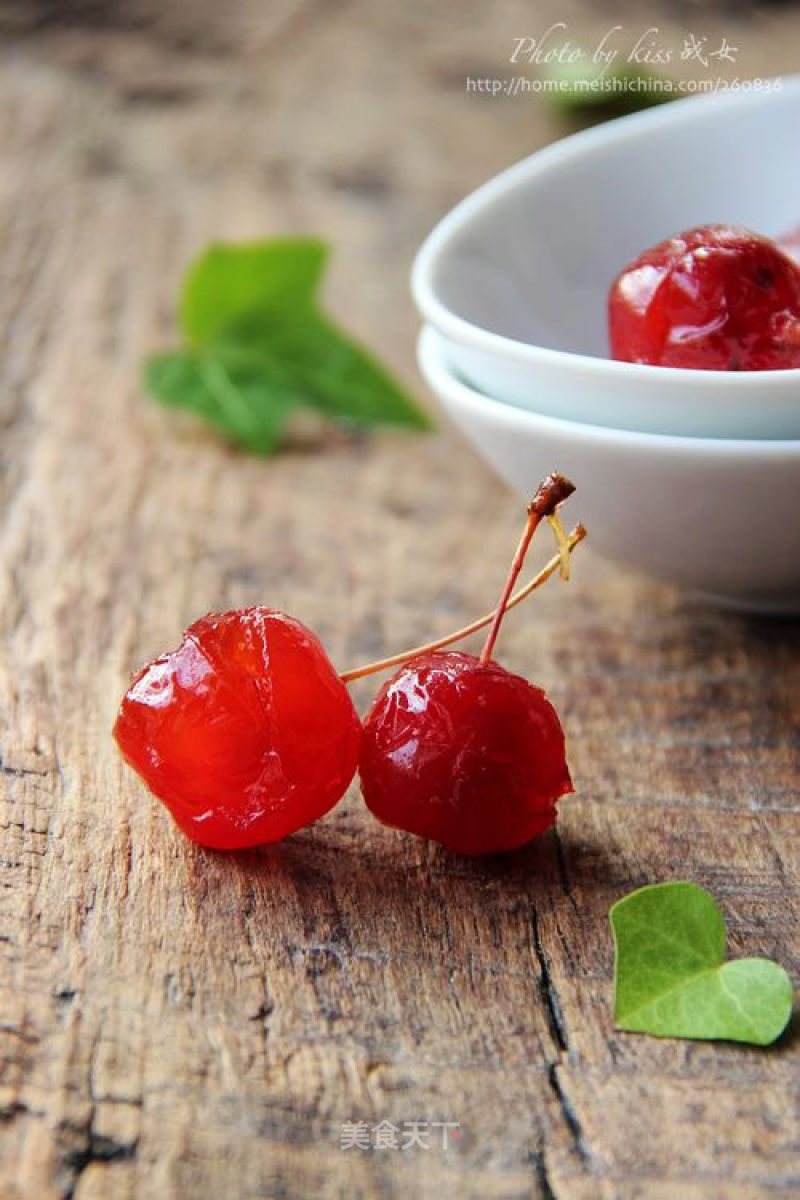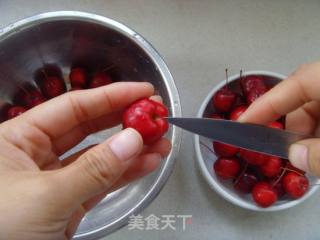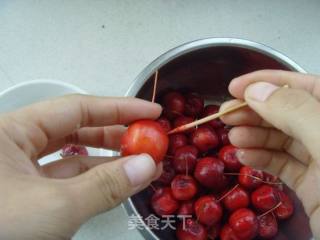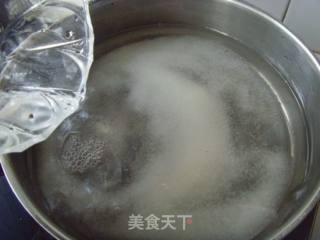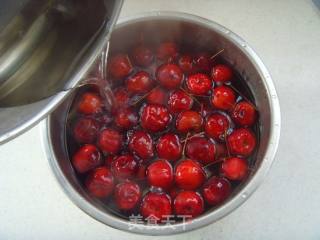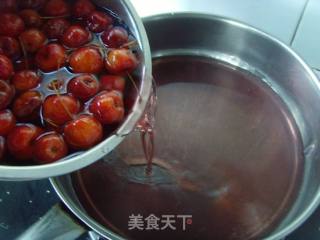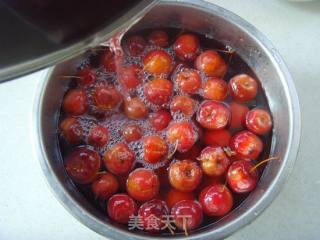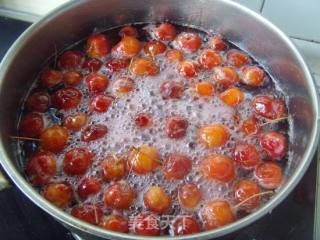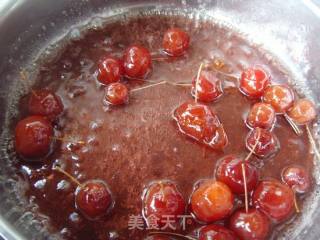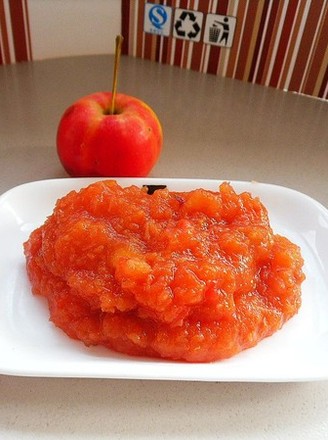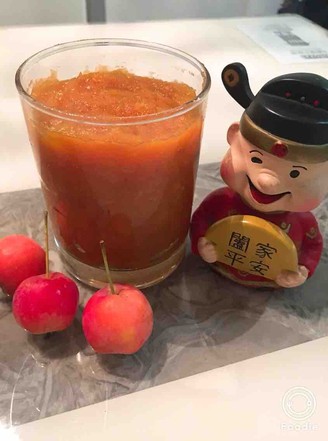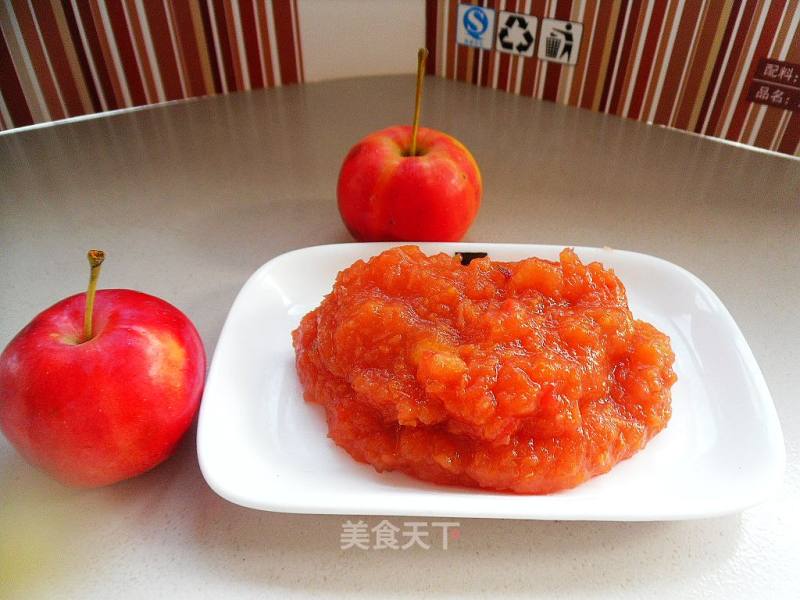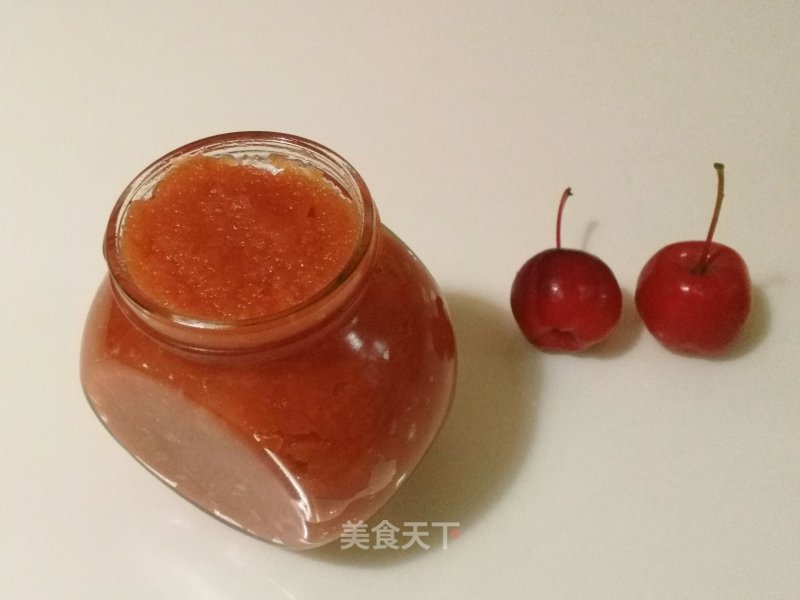Ancient "four Seasons Fruits"---dried Begonia
1.
Wash the crabapple fruit and drain.
2.
Go to the fruit nursery with a knife.
3.
Use a toothpick to pierce small eyes of the crabapple fruit around the body for the sugary taste.
4.
Pour sugar and water into the pot and bring it to a boil.
5.
Dip the sugar water into the crabapple while it is hot, mix well and marinate for more than 12 hours.
6.
Pour the juice from the pickled crabapples into a pot and heat it over low heat.
7.
Pour it back into the crabapple fruit and pickle it for 12 hours.
8.
Pour the crabapple fruit and the sugar juice into the pot and heat it over low heat.
9.
Turn off the heat when the syrup is bubbly and the crabapple fruit is transparent.
10.
Take out the crabapple fruit and let it air dry for 2-3 days.

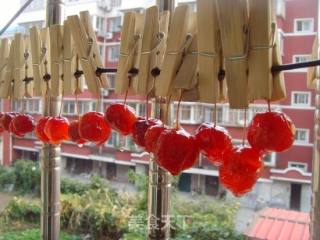
Tips:
There are many kinds of candied fruits in Beijing. The distinction between candied fruits and candied fruits, according to the custom in Beijing, is called candied fruits with low water content and no juice. For example: preserved apple, preserved pear, preserved apricot, preserved peach, preserved sand fruit, preserved fragrant fruit, preserved begonia, preserved jujube (also known as golden silk candied date), preserved green plum, preserved red fruit, etc. Because the above candied fruits are made by processing the raw materials, cooking them with sugar, and then drying them, their color is brown, golden or amber, bright and transparent, the surface is dry, slightly sticky, and the water content is below 20%. This kind of fruit product, also called "Northern Preserved Fruit" or "Northern Honey", means candied fruit in the northern form. While winter melon strips, sugar water chestnuts, sugar lotus root slices, sugar ginger slices, etc. have a layer of powdery white icing on the surface, they are called sugar-coated preserved fruit, also called "nan preserved fruit" or "nan honey". Candied fruit means candied fruit, its texture is crisp and contains a lot of sugar. Candied fruit is a fruit product that is boiled with honey or candied without drying. The surface is moist and soft, with a water content of more than 30%, and is generally dipped in sugar juice.
Begonia fruit is also known as catalpa, sea red and so on. Begonia contains a lot of nutrients, such as sugars, vitamins, organic acids, etc., which can supplement the nutrients needed by the human body, improve the body's functions, and enhance the resistance to diseases.
Begonia fruit is flat, sweet and slightly sour, enters the spleen and stomach into the two meridians;
It has the effects of promoting body fluid to quench thirst, invigorating the spleen and relieving diarrhea;
Indications include indigestion, food accumulation, abdominal distension, enteritis, diarrhea, and hemorrhoids.

